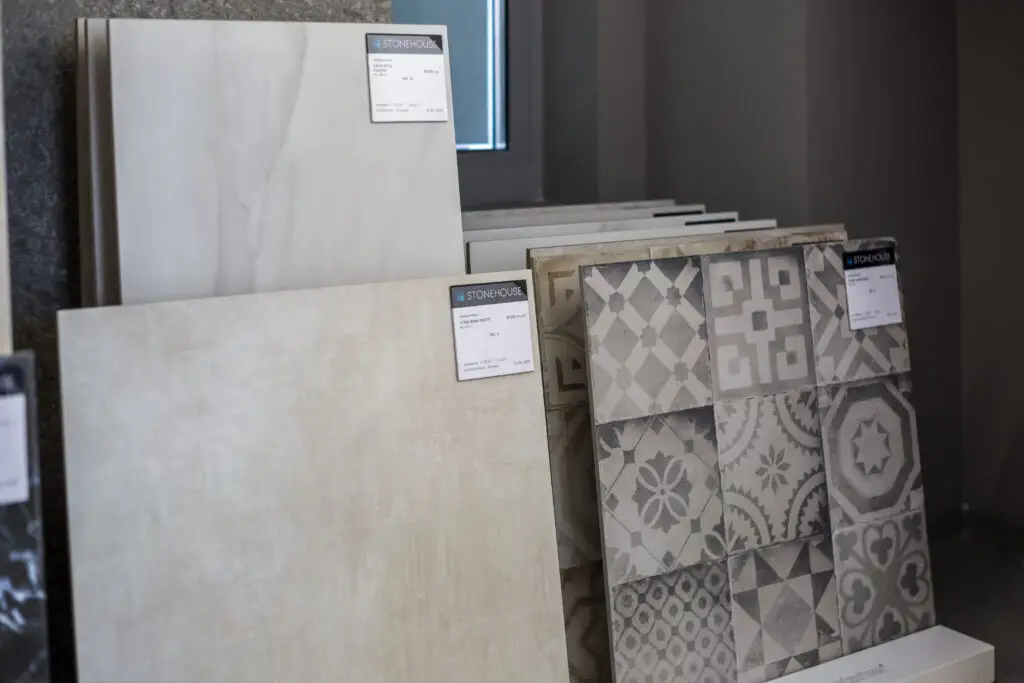When it comes to hard-surface flooring, ceramic and porcelain tiles are two of the most popular and durable choices. They are often grouped together, but they have distinct differences that impact their best use. Understanding these differences is key to making the right choice for your home.
Key differences between ceramic and porcelain tile
The primary difference between ceramic and porcelain tile lies in how they are made. Both are a type of ceramic tile, but porcelain is made from a denser clay and is fired at a much higher temperature. This process makes porcelain tile significantly less porous and harder than standard ceramic tile. The main technical distinction is the water absorption rate. Porcelain tiles are certified to have a water absorption rate of 0.5% or less, which makes them highly resistant to moisture.

Pros and cons of ceramic tile flooring
Ceramic tile is a versatile and budget-friendly flooring option.
Pros
- Affordability: Ceramic tile is generally less expensive than porcelain tile, making it a great option for a wide range of projects.
- Easier to Install: Because ceramic is softer, it is much easier to cut and shape with standard tools. This makes it a more popular choice for DIY enthusiasts.
- Design Variety: Ceramic tiles offer a huge variety of colors, patterns, and designs, including options that mimic the look of wood or natural stone.
Cons
- Lower Durability: Ceramic tile is softer and more prone to chipping and cracking, especially in high-traffic areas.
- Higher Water Absorption: With a water absorption rate above 0.5%, ceramic is not ideal for outdoor use or for very wet, high-moisture areas like shower floors.
Pros and cons of porcelain tile flooring
Porcelain tile is known for its strength and exceptional durability.
Pros
- Extreme Durability: Porcelain is extremely hard and dense, making it resistant to scratches, dents, and heavy foot traffic. It’s an excellent choice for busy households.
- Water and Stain Resistance: Due to its low porosity, porcelain is nearly waterproof. This makes it the top choice for bathrooms, kitchens, mudrooms, and even outdoor patios.
- Versatility: Porcelain is a great choice for both residential and commercial applications because of its strength and resistance to wear and tear.
Cons
- Higher Cost: Porcelain tile is typically more expensive than ceramic, both for materials and for the labor to install it.
- More Difficult to Install: The hardness of porcelain requires specialized tools, such as a wet saw with a diamond blade, to cut. This makes it a more challenging material for a DIY project and can increase labor costs.
Factors to consider when choosing
| Feature | Ceramic Tile | Porcelain Tile |
| Durability | Lower (prone to chips) | Higher (extremely durable) |
| Best Use | Low-to-moderate traffic areas | High-traffic, moisture-prone areas |
| Cost | More affordable | More expensive |
| Installation | Easier to cut and install | Harder to cut, requires specialized tools |
Ultimately, the choice between ceramic and porcelain tile depends on your project’s needs and budget. If you’re looking for an affordable, beautiful option for a low-traffic area like a guest bathroom, ceramic tile is a fantastic choice. For high-traffic areas, kitchens, or any space that will be exposed to a lot of moisture, porcelain tile offers superior durability and performance.Regardless of which tile you choose, remember that the quality of the installation is what truly ensures a long-lasting and beautiful floor. For professional installation services that will guarantee a flawless finish, contact Sky Hardwood Floors today for a free consultation and quote.
